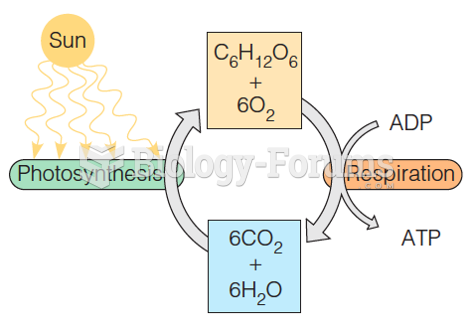|
|
|
More than 34,000 trademarked medication names and more than 10,000 generic medication names are in use in the United States.
Patients who have undergone chemotherapy for the treatment of cancer often complain of a lack of mental focus; memory loss; and a general diminution in abilities such as multitasking, attention span, and general mental agility.
Cyanide works by making the human body unable to use oxygen.
About 100 new prescription or over-the-counter drugs come into the U.S. market every year.
Hip fractures are the most serious consequences of osteoporosis. The incidence of hip fractures increases with each decade among patients in their 60s to patients in their 90s for both women and men of all populations. Men and women older than 80 years of age show the highest incidence of hip fractures.







